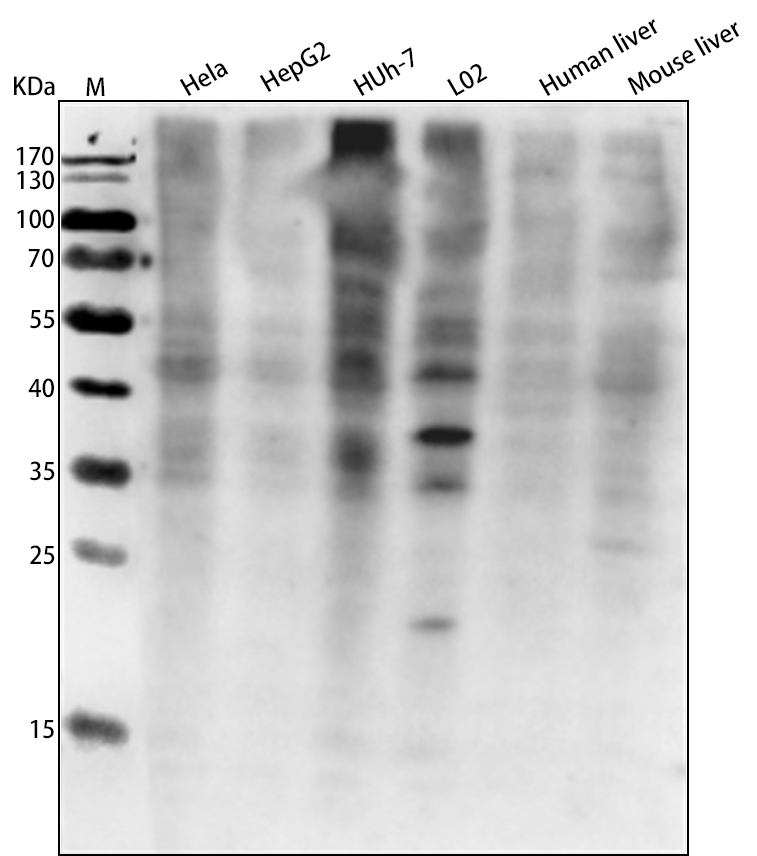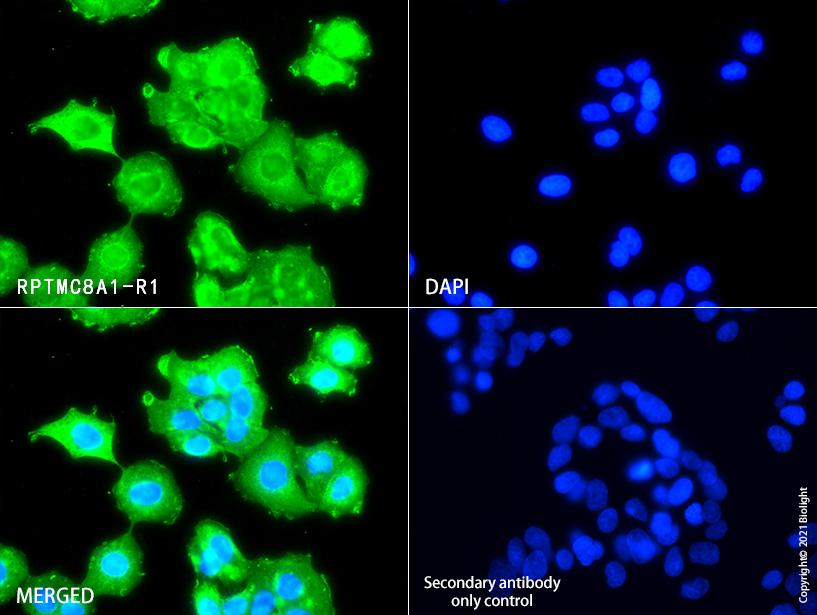
Anti-O-Linked N-Acetylglucosamine Antibody, Recombinant Antibody, R1
产品编号:RPTMC8A1-R1
¥ 询价
规格 100ug
浓度 1.3mg/ml
产品名称:Anti-O-Linked N-Acetylglucosamine Antibody, Recombinant Antibody, R1
克隆号:R1
抗体亚型:Rabbit IgG
经验证的应用:WB/IP
交叉反应:All
特异性:Monoclonal antibody is produced by immunizing animals with a peptide containing serine-O-linked N-acetylglucosamine (O-GlcNAc).
免疫原:Synthetic peptide
宿主:CHOS
来源:Recombinant Rabbit IgG
纯化:Protein A purified
缓冲液:Supplied in PBS, 50% glycerol and less than 0.02% sodium azide, PH7.4
状态:Liquid
应用:The application notes include recommended starting dilutions; optimal dilutions/concentrations should be determined by the end user. WB: 0.5~5ug/ml IP:1:20-1:50
使用&储存条件:Shipped at 4℃.Store at 4℃ for frequent use.Aliquot and store at -20℃ for 12 months.Avoid repeated freezing/thawing and violent shaking.Please centrifuge it, before using.
质量验证图:
Figure1.Application in WB
Western blot analysis of 293T and HeLa cells, untreated or treated with the MG132 (50 µM, 90 minutes), using RPTMC8A1-R1 at 2ug/ml dilution. Secondary antibody: HRP Goat Anti-Rabbit IgG (H+L) at 1:10000 dilution. Blocking buffer: 5% nonfat dry milk in TBST. Detection: ECL Basic Kit . Loading control to GAPDH (CP00002HuA10).
Figure2.Application in ICC
Immunofluorescent analysis of Hela cells , using RPTMC8A1-R1 (green) at 10ug/ml dilution. Nuclear DNA was labelled in blue with DAPI (blue).
别称:O-GlcNAc, O糖基化
背景信息:A distinct form of protein glycosylation, beta-linked N-acetyl-glucosamine (GlcNAc) moieties can be added to serine or threonine residues of proteins. This differs from other forms of glycosylation, as it typically is a single moiety rather than the complex branched sugars that are more commonly studied. It is thought that these modifications happen in a much more dynamic cycle more reminiscent of phosphorylation modifications. GlcNAc modified proteins are found in the cytoplasm and nucleus and are modulated by means of specific O-GlcNAc transferases (OGT) as well as GlcNAcase activity that can be inhibited using the Thiamet-G (TMG) inhibitor. Mass spectrometry analysis of this modification has been complicated due to the loss of the GlcNAc group during ionization and fragmentation, but methods and technologies such as electron transfer dissociation (ETD) are opening up new avenues to study these modifications. O-GlcNAc could play an important role in many cellular processes, including metabolism, growth, morphogenesis, apoptosis, transcription, and it may play a critical role in cancer.
全称:/
说明书:待上传


